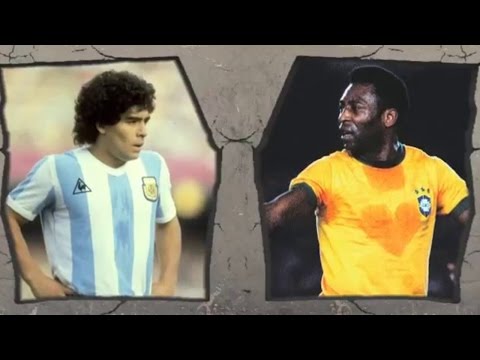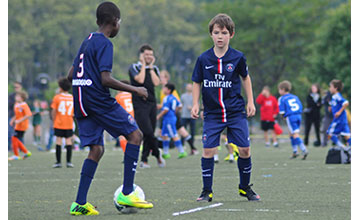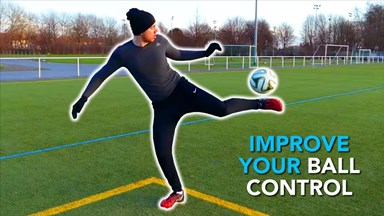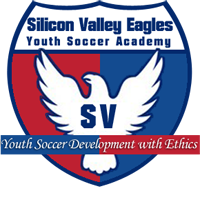SV Eagles
The Silicon Valley Eagles Soccer Academy blog is a great source of soccer coaching tips, parents and players improvement tips and advises, and updates on the soccer world news.
I want to be one of the best soccer players? how can I achieve my goal?
- Font size: Larger Smaller
- Hits: 4678
- Subscribe to this entry
- Bookmark
 I want you to know that the best coaches in the world alone they cannot make you into the best soccer player possible by themselves. They need help. They need You.
I want you to know that the best coaches in the world alone they cannot make you into the best soccer player possible by themselves. They need help. They need You.
This article is intended for serious soccer athletes (regardless of skill level) that are looking to pursue soccer as their sport of choice. The players that see themselves in their High School Varsity teams, College Team, or yes even Pro. The players that value long term development versus the short term win.
Paying to Be Mediocre
In the U.S. we have essentially the highest standard of living in the world, but also have essentially zero soccer culture.
Sure, we love our US Women National Team, and every four years we watch the USMNT compete, but we certainly aren’t going to spend thousands of dollars on season tickets to our local professional soccer club.
We have football, basketball, baseball, and hockey too deeply embedded in our culture for that…
So why should you care?
Unlike Europe, we don’t have an elite soccer development system, but instead have a pay to play system.
This creates a soccer culture focused on short term wins versus long term development of the players.
Winning is important yes, but is it more important that getting better at your own game?
We also have a culture of fancy and instant gratification. We pay for private lessons for players who don’t spend hours working on fundamentals on their own. We have slews of kids with $150 boots who cannot trap a ball. We have parents, and therefore we have coaches, who actually believe it matters if their 12 year old wins a soccer game.
We look for some magical solution, when time-tested fundamentals keep producing the top UEFA players…
Fundamentals such as getting touches the ball thousands of times a day, whether it be through an elite academy (Europe) or through playing pickup from sunrise to sunset (South America).

Technical Development (Improving Ball Control)
You see in order to be the best soccer player that you can possibly be, you need to focus on technical development.
What is technical development?
Technical development is a fancy phrase for ball control. It encompasses everything from first touch to juggling, to wall work. It plays a tremendous role when it comes to your confidence on the field during game time. Our coaches highly requested to go over some Technical Development and Ball Control Drills in every training sessions for the young ages.
Does this scenario sound familiar?
You are in the middle of your soccer match, your teammate passes you the ball, and rather than playing it in stride or doing a give and go, you freeze up?
This is mostly do to a lack of technical development or lack of ability to control the ball. You can notice the players that suffer from this at practice or at games. They are thinking too much about what to do with the ball rather than just doing it.
Confidence is the differentiator and confidence is a byproduct of technical development, the ability to maneuver and control the ball with your feet.
Why can’t my coach help with this?
Well if they had all the time in the world, they would however they do not. You see, Club Culture Matters here in the US.
In America we face a dual edged sword, because of our small club system.
Parents and players want to win, so clubs compete for early developers and focus on direct soccer.
Direct Soccer:
- Most passes are forward
- “Passes” are really kicks into open areas
- Idea is to get the ball behind a defender which leads to foot races
- Throw-ins are aimed down field toward opponents goal or “down the line”
- Long and vertical passes
You’ll notice that in this style only a few players are in touch with the ball while the majority of the other teammates are simply kicking the ball forward, down field, hoping those stronger players can produce a goal. In addition, there is a huge amount of change in possession. This is more of a run and gun approach.
This method is more aggressive and easier to “teach,” however it provides mediocre development to the players in regards to game dynamics and ever more so, their technical development over the long term.
Regardless, direct soccer is favored due to how easy it is to implement and because it favors a win ratio as opposed to a technical development ratio.
Soccer has so many skills relative to many other sports, and also has a huge fitness component, which makes a 90 minute practice time spread thin if you try to coach Possession Soccer.
Possession Soccer on the other hand is what you see most European teams play.
Possession Soccer:
- Passes made in all directions
- Free kicks played to feet to keep possession
- Throw-ins played to possess, often to back or midfield players
- Smooth tempo throughout
This style of soccer is difficult to teach and master if you are only going to 3-90 minutes practices a week. However it accounts for what we call “The Beautiful Game” and confidence (technical development) plays a huge role.
In a possession style soccer, the players themselves have to rely on their technical abilities and understand their roles when it comes to the entire team. It favors a technical development ratio.
So what is a coach to do?
If your coach focuses on developing individual skills and plays possession soccer, you will often lose to teams who play a more direct game and have a few very good athletes.
Why? Time.
Unless your coach has enough time to focus on technical development and ensuring that each player at each position understands their role, possession soccer is out of grasp, even though when it is implemented well, it will win and control any game. Think of the past couple World Cup winners and the styles they played. All Possession. So your coach has to sacrifice wins for development.
Lose too many games, and your U14 record may not be great… as if that matters at all. But, in our current culture, players will leave that club and go to clubs who win and play in ‘better leagues’.
So, if your coach wants to keep players, they have to win. It isn’t their fault. Your coach literally cannot devote huge amounts of time to individual skill development each practice. Parents and players want to win. It simply isn’t possible.

Soccer Practice is Not Where you Become Great
It is simple. 2-3 practices per week does not produce excellent results. Half the time at practice you are scrimmaging and not focusing on technical development.
Lets look at it from a different perspective:
Can you eat cleanly two days a week and have a great physique?
Can you practice piano twice a week and be world class?
Can you practice soccer twice a week and be great?
Thinking that going to soccer practice alone is going to make you great is not realistic. There has to be more commitment from the players side.
European Players Are Better Than Us
Up to age 14 they practice three times per week, maximizing touches by focusing on technical development. By 15 they practice 5 days per week.
Practice is not ‘fun’. Practice is work. On off days, the players scrimmage playing pickup because soccer is the most popular sport. They play one game every 5-6+ practices.
They don’t play every weekend, with a huge tournament every couple weeks. Europe focuses on player technical development and possession style gameplay.
A European player by age 18 has had up to 10 times as many touches on the ball as a U.S. player. Do you really wonder why we have 350 million people and only a handful of UEFA level players?
How Can I Help Myself and My Coach?
You will need to find a way to do that technical training on off days.
If you have been following along, you know that your coach has a lot of pressure to win in order to keep players and keep parents happy. In addition, soccer practice alone is not going to get you to where you want to be. Half of it is spent scrimmaging while the other half is teaching you how to play direct soccer rather than possession. Yes, pickup soccer is fun, and helps develop your game, your style, your flair… but, since your development most likely lacks technical training, that must be your priority.
Think about it, if you get better ball control you gain more confidence, especially when it comes to game day. This in turns alleviates some of the pressure from your coach since they know have another player they can rely on. Your team will appreciate it as well. It is a Win-Win-Win.
So how do you do it?
Your focus should be a minimum of 5,000 touches per day.
For younger athletes, or athletes who aren’t conditioned, this may be half that number while tolerance is built up. This is still far less than many academy players get, but as a goal, this should be where you start. Learn the discipline to show up every day for an hour, and suddenly 90 minutes is an easy next step.
Ball Control is a huge part of those 5,000 touches.
We estimate that when a player is focused on technical development, they can get between 150 to 225 touches per minute depending on skill level.
Knowing this, we recommend 15 – 30 minutes of tight ball control work each day. If you add in a brief rest every few minutes, this means you will do sessions of 20 – 40 minutes depending on your age and development level.
By working up to 40 minutes on the ball, you can easily get 3-4,000 touches that encompass all of the following (which are NECESSARY):
- Bottom of the Foot Touches
- Top of the Foot Touches (Laces)
- Inside of the Foot Touches
- Outside of the Foot Touches
- Pushing the Ball In, Out, Forward
- Pulling the Ball In, Out, Forward
- Ticking the Ball Behind Your Legs
- Stepping Over the Ball
- Scissoring Over the Ball
- Feinting
- Quarter and Half Turns with the Ball
- Controlling the Ball with One Foot
- Controlling the Ball By Switching Feet
Each of these areas must be worked in a progressive system that moves from:
- Basic Rhythm and Coordination, learning to do the patterning, to
- Precision (cone work) to master exactly where the ball is traveling, to
- Timing work with a passive defender to learn spacing and a feel for when each technique can be used, to
- Game Speed work with a motivated defender to finally master each technique.
Soccer Fottwork: 500-1000 touches per day - Beast Mode Soccer

Any Extra Tips For Improving Ball Control?
After Ball Control work comes first touch and controlled passing work on a wall. Wall work is simple, challenging, and is the fastest means to develop first touch I have ever seen.
We use over 100 drills in a full progressive system to develop first touch. By adding 20-30 minutes of wall work daily you will see untold differences in your game.
And finally you cannot neglect juggling work. Not goofing around juggling, but juggling work. Learning to be calm with the ball in the air, learning how much time there is while the ball is dropping from your chest or thigh to your feet is essential. Learning that a ball in the air is just as easy to shield and control as one on the ground… and sometimes expands possibilities.
The icing on any technical session focused on ball control is juggling work. We do no less than 15 minutes daily with ball ranging from a size 5 to tennis balls… and everything in between.
The funniest part of every player’s development comes after about their first 30 days… this is when they first truly notice a difference and carryover in their training. Suddenly they turn without thinking. They start pulling the ball across their body under pressure and find space. They feel pressure and escape touch away to create time to release the ball.
‘Wow! Where does this leave me? How do I know where to even begin as a player who wants to get better?’
Begin at the beginning.
This is where we have everyone start… the basics. Because every fancy video you ever see on YouTube is simply a stacking of basic techniques or not even doable in a game situation.
Stop chasing wins and start chasing being a great player. Don’t pay to be only mediocre!!
The touches are easy, but the conditioning may get you. The first thing that most players comment on is that their lower legs aren’t used to so many touches in a small period.
Your soccer coach won’t tell you that they need help. So step up and take action by developing your technical ability. Get more touches on the ball. Increase your level of confidence. Focus on the long term development as opposed to the short term win. Help yourself, help your coach, and help your team.
Doing so will ensure that you have the best opportunity to get into your High School varsity team, college, or even go Pro.







